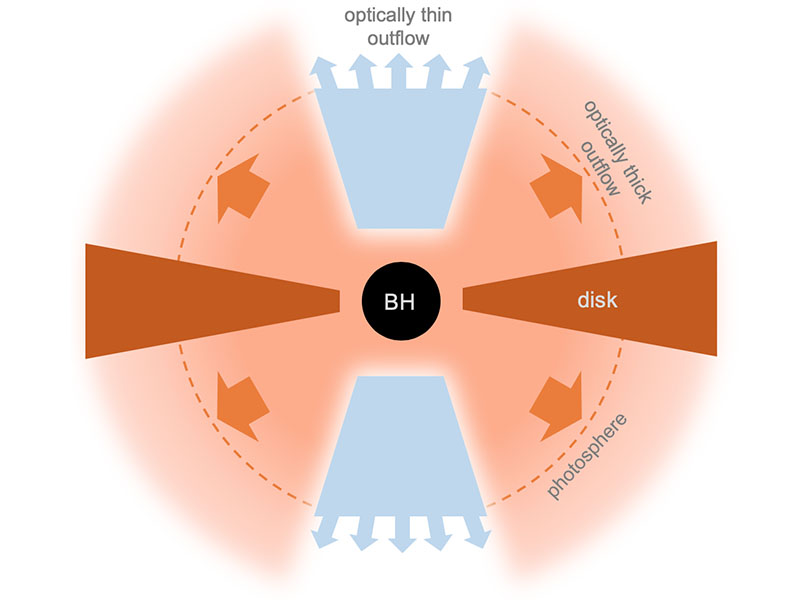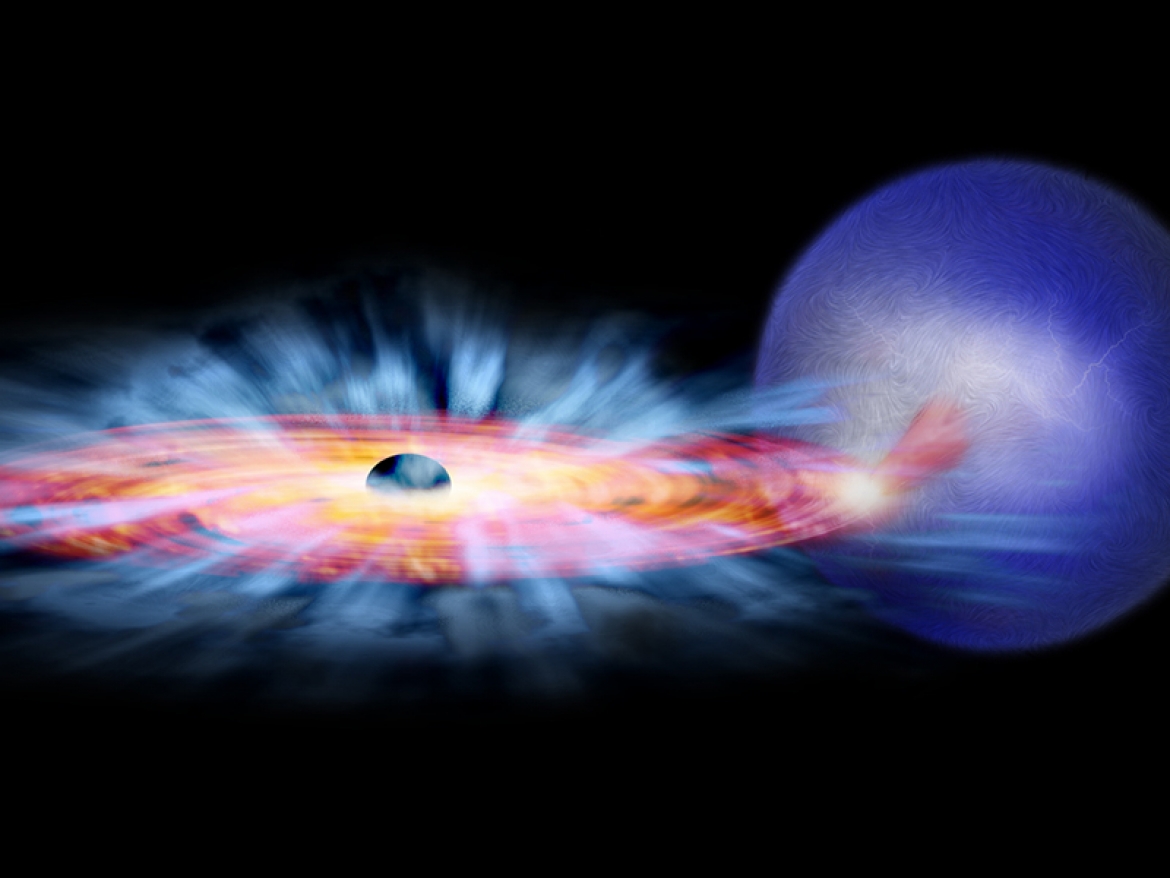X-rays Reveal Supercritically Accreting Compact Objects
X-rays Reveal Supercritically Accreting Compact ObjectsBy Yu Zhou and Hua Feng
Accretion onto compact objects has a critical rate when the radiation balances the gravity. The physics for supercritical accretion is still an unsolved problem. It is suggested that, because of the presence of strong radiation pressure, supercritical accretion will power a massive wind that is optically thick and Eddington-limited. Based on Chandra observations of nearby galaxies, Zhou et al. found a list of very soft X-ray sources, which are argued to be good candidates for compact objects under supercritical accretion. The results will be published in the Astrophysical Journal.
Accreting compact objects are bright X-ray sources on the sky. The mass accretion rate determines the energy output. In theory, the luminosity produced in such a way has an upper limit, the so-called Eddington limit, above which the accretion process will be stopped by the strong radiation outwards and so will be the energy release. It is still unclear what will happen when the accretion rate is much higher than needed to power the Eddington luminosity. Both analytical analysis and numerical simulations suggest that, with the presence of strong radiation pressure, a considerable fraction of the accreting materials will be blew away in form of massive winds. The wind is speculated to be nearly spherical and optically thick, and its emission is capped at the Eddington limit (see Figure 1).

THCA student Yu Zhou and her colleagues searched in the Chandra archive for X-ray sources with such a fingerprint. They argued that other physical processes (e.g., nuclear burning on the surface of white dwarfs) and accretion at a sub-Eddington rate are unlikely to produce the observed X-ray spectra. The luminosity distribution is consistent with the scenario that the compact objects in these sources are composed of two populations, neutron stars and stellar-mass black holes. The results suggest that supercritically accreting compact objects are not necessarily ultraluminous, and may have a strong impact to the environment.
Reference
Zhou, Y., Feng, H., Ho, L. C., & Yao, Y., Evidence for Optically Thick, Eddington-limited Winds Driven by Supercritical Accretion, ApJ to appear, arXiv:1812.02923



